One of the most attractive tourist areas in Andalusia en the Alpujarra.
Now when we think about the Alpujarra, the idea comes to us of the pretty white towns that hang on the slope of Sierra Nevada in the Granada province…But there is another Alpujarra.
Specifically, I am referring to the Alpujarras from Almeria, much less known, but which also has white villages with very nice corners.
Furthermore, this natural region of Andalusia It has very interesting historical roots and a attractive cultural heritage.
All the information in detail
Most beautiful towns in the Alpujarra of Almería
Then for an upcoming trip to Andalusia, we are going to propose you a route through the most beautiful towns in the Alpujarra of Almería, where you can discover its best attractions.
Where is it and how to get to the Alpujarra of Almería
For get to the Alpujarra of Almería from the central area of the peninsula, the most direct route that I can possibly recommend Google Maps, is the one that takes you through Guadix y Calahorra, In the province of Granada.
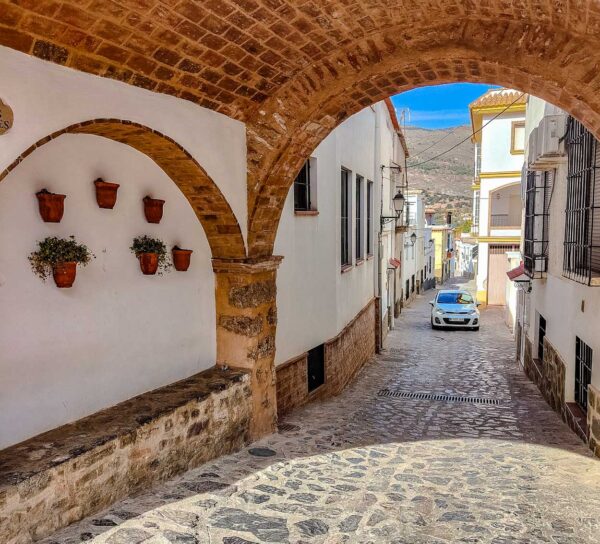
From Levante you will arrive passing through the Almeria city, and from the west of Andalusia, along the coast and then head towards the interior of the province.
Most of your route will be on the highway, but I do have to consider that since Calahorra you must cross to the Alpujarras from Almeria raising the Port of la Ragua.
With an altitude of 2000 meters, if you go in winter, you must make sure that access is enabled without snow.
But in any case, it is a road that, both on the way up and down, has long, very winding sections and, above all, very narrow, so you have to be very careful when driving.
Furthermore, it is very possible that you will see mountain goats roaming the road, and you have to be very attentive as some will possibly cross it.
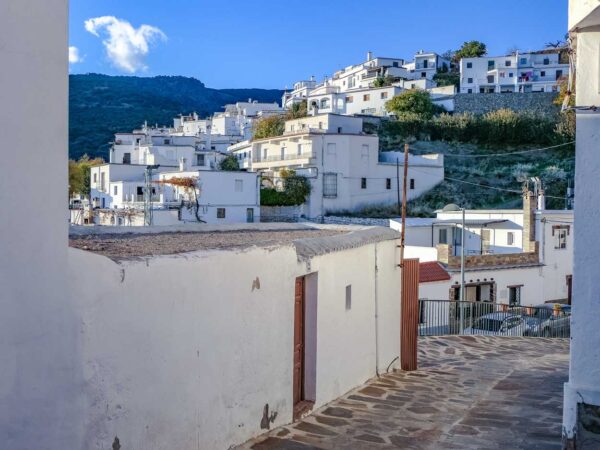
This route will allow you to travel the white towns of the Alpujarra of Almería passing first through the one with the highest altitude, Bayarcal, located on the west slope of a mountain, once you have accessed the Almería province.
What to see and do in Bayárcal
Bayarcal It is a small town of white houses that extend through narrow alleys at different heights, where you will find some beautiful corners.

From Moorish origin of Bayárcal You will find various notes in some house windows, such as the town hall itself.
From the heritage point of view, the San Francisco Xavier church built in the 16th century in Moorish style, whose exterior with ocher colored stones stand out strikingly against the white color of all the houses in the town that surround it.
What to see and do in Ohanes
Another town that is very worth visiting, also located at the top of a mountain slope, is ohanes.
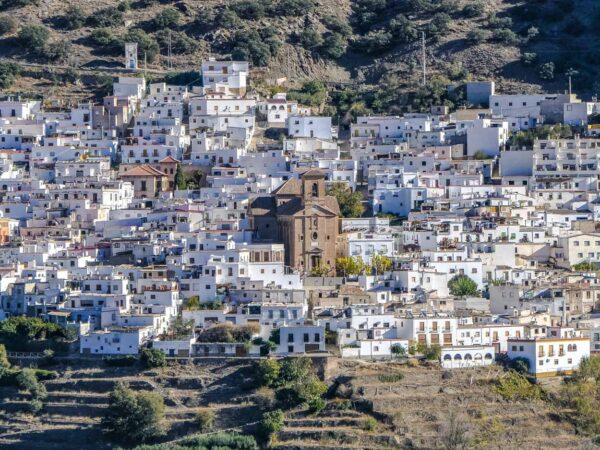
Within the framework of a high mountain landscape that allows you to enjoy spectacular views, ohanes You arrive via a very winding and narrow road.
As you approach, in a turn, the image of this town of the Alpujarras from Almeria that extends wide across the mountainside.
With its distribution and the parish church in the center of the town, you can walk through two narrow one-way streets that are arranged overlapping.
ohanes It is a town of slopes and corners that had a splendid past living off the export of grapes, which is reflected in the use of the image of this fruit on all the street signs.
It was a grape that was exported to Central Europe because it was preserved for up to three months, but in the 80s this agricultural activity ended because it was no longer competitive for export.
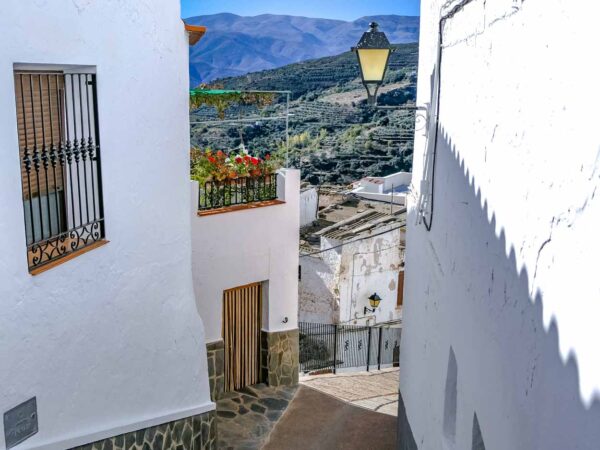
You still see some vestige of that economic strength in some vines that hang on terraces near the town.
ORGANIZE your TRIP
- Don't forget your TRAVEL INSURANCE with a 5% discount
- Book the HOTEL for your trip
- RENT a CAR for your trip
- The best TOURS and EXCURSIONS in Spanish
- NO-LINE TICKETS for museums and monuments
- Best FREE TOURS around the world
- Book your TRANSFER from the airport
- eSIM card with INTERNET at the best price
To know ohanes, you must park your car either at the entrance or exit, and walk along its slopes and streets, not failing to see the Plaza Mayor of the same, where the town hall and the parish church built in the 18th century are located.
On this walk you will be struck by the numerous sources that are arranged along its streets, most of them built with stacked slate stones.
On your route you will see that fountains are a common element in the various towns along the route.
What to see and do in Laujar de Andarax
Laujar of Andarax It is the town with the largest population in this natural region, and is considered the capital of the Alpujarra of Almeria.
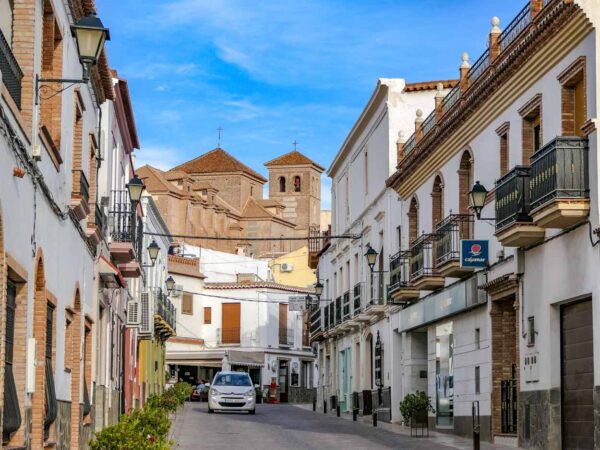
The first historical references of Laujar of Andarax They date back to the 10th century, as a place for the manufacture of ceramics in Muslim times.
Tras the reconquest of Granada for the Catholic kings, Laujar It was the place where the last Muslim king settled, Boabdil, and in 1499 there was already a first Moorish uprising which was harshly repressed with the destruction of the Muslim citadel and its mosque.
In the subsequent Moorish uprising known as the War of the Alpujarras, which occurred in 1568, Laujar It was the center of operations and command of the Moriscos, who three years later were completely defeated and expelled.
Illustrious people in Laujar de Andarax
From a historical point of view, it is worth highlighting two illustrious people who were born in Laujar de Andarax.
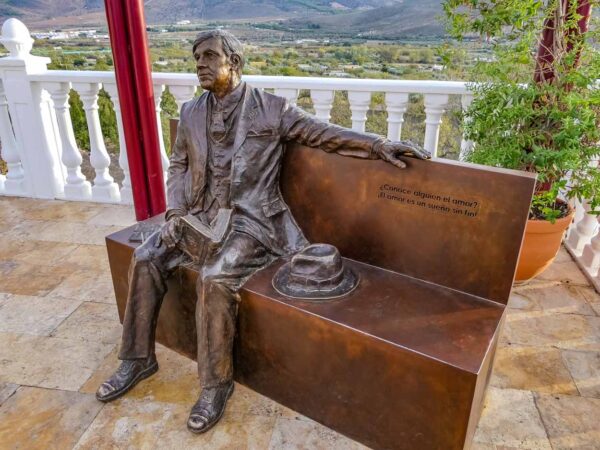
On one hand, Pedro Murillo Velarde, a Jesuit priest born in this town in 1696 and recognized as a great geographer and universal writer, in addition to standing out for his defense of the rights of indigenous people during his stay as rector of the Pontifical of Manila.
As a reminiscence, you may be surprised to see that currently in Laujar there is a Hispanic-Filipino Cultural Center that develops various activities.
Also in this Almeria town, in 1877 he was born Francisco Villaespesa, poet and playwright who promoted modernism in Spain, who currently gives his name to the main street that runs through the town.
At Vega Viewpoint located next to the town square, at the foot of the Gádor mountain range and overlooking a meadow with olive and almond trees, there is a sculpture paying tribute to said playwright.
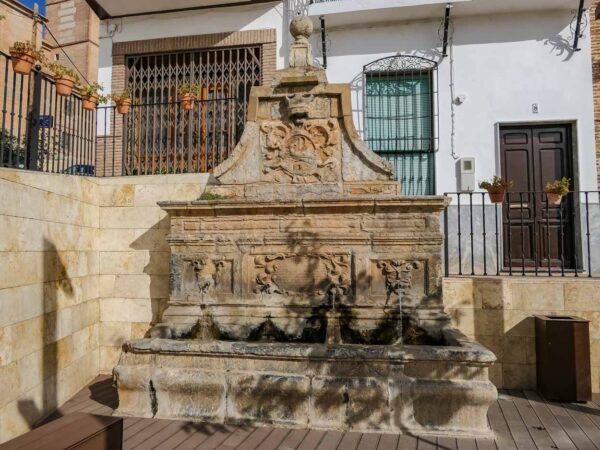
Upon arriving at Laujar of Andarax With any of its entrances, from the east or west, what you must do is leave the car in one of the parking spaces there.
Fountain of the Four Pipes in Laujar de Andarax
From there you can walk towards the center of town to reach your Plaza Mayor, where you can see what is considered the most emblematic heritage of Laujar of Andarax, Four Pipes Fountain, also known as the Plaza Pillar.
From the 17th century, it was built in Baroque with gray limestone, and although originally there were two pipes, in 1805 the other two were incorporated into the sides.

At the top of the font you can see the heraldic shield of the population.
La Town Hall of Laujar de Andarax It is a building built in 1792 in neoclassical, with a rectangular floor plan and bricks, which is divided into three floors, with a clock from 1902 at the top.
In the square you have the tourist office, which opens from Tuesday to Friday from 10,30:13,30 a.m. to 10:14 p.m., and on Saturdays and Sundays, from XNUMX a.m. to XNUMX p.m.
There they will suggest you do one of the cultural routes To see them monumental fountains o hermitages what's in the town.
Don't forget your Travel Insurance
Are you organizing your trip or getaway? Don't leave without take out your travel insurance before, and here we explain why. If you hire it with us, you have a 5% discount
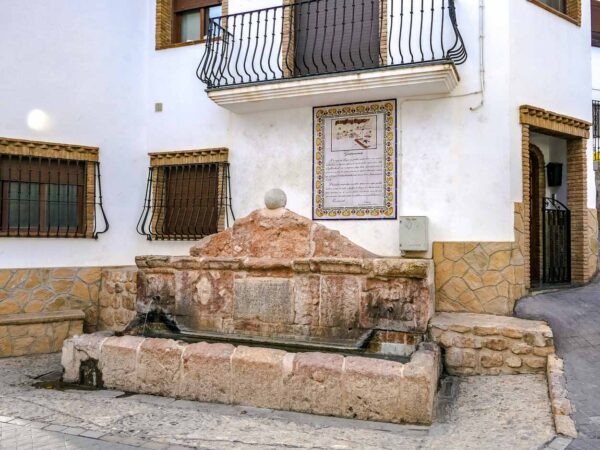
Alpujarra Cathedral in Laujar de Andarax
From the square, during your visit you must go up to the upper area located behind the town hall, where you will find the Church of Our Lady of the Incarnation, which was built in 1686 on the remains of a previous church.
It is a building Moorish style on the outside and baroque inside, which due to its enormous dimensions is known as the Alpujarra Cathedral.
Inside, the enormous Churrigueresque baroque altarpiece from the mid-18th century stands out, and among its artistic assets it has an image of the Immaculate Conception sculpted by Alonso Cano.
Next to the church you can see the Vicar's House from the 18th century, a ancestral building of Moorish style with a large interior patio
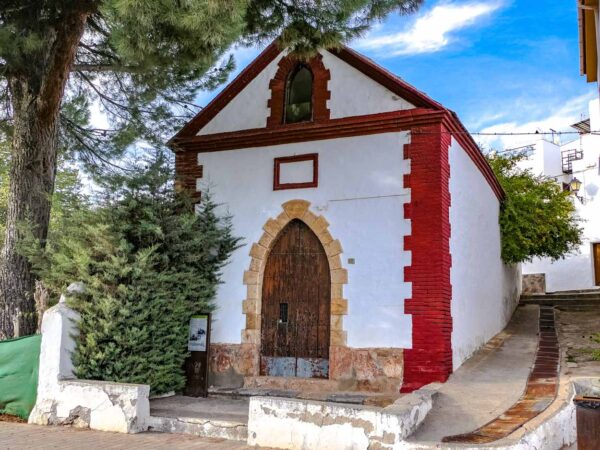
If you follow the “Pillars Route“, you will reach the Pilar Seco built in 1688 with gray limestone and baroque style, only four years after the Plaza Pillar.
With its four pipes, it has a very similar style, and although it is popularly known as dry, it is said that in reality water never stopped flowing through its pipes.
Following this route you will also reach the Hermitage of the Souls from the end of the 19th century, dedicated to the blessed souls of purgatory, where you will have another exponent in Fondón.
What to see and do in Fondon
Fondon must also be a essential visit trust your tour of the Alpujarra of Almería.
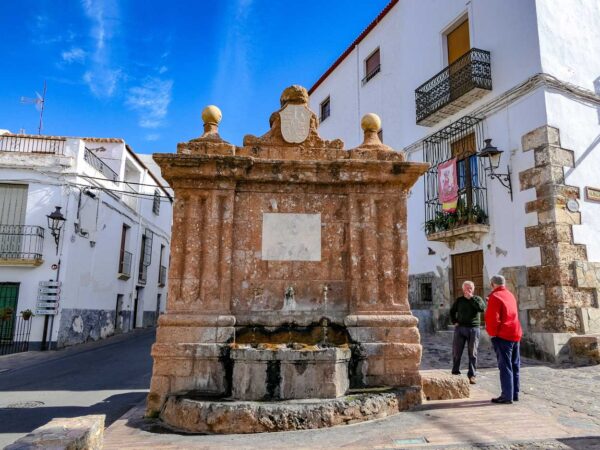
It was an important scene of the aforementioned War of the Alpujarras, since the agreement was signed there after the surrender of the Moriscos, who were later expelled.
During your visit you will also see that Fondon It is an important enclave of the mining activity which developed especially from the 18th century, of which in the surroundings you can still see some brick fireplace from old foundries, as well as some old mining pits of that time.
Your visit will have as its main center of attention the main square of the town, which is dedicated to the poet Bernardo Martín del Rey.
The monumental Fountain of Charles IV, built in 1790 on a pedestal, from which five bronze pipes protrude.
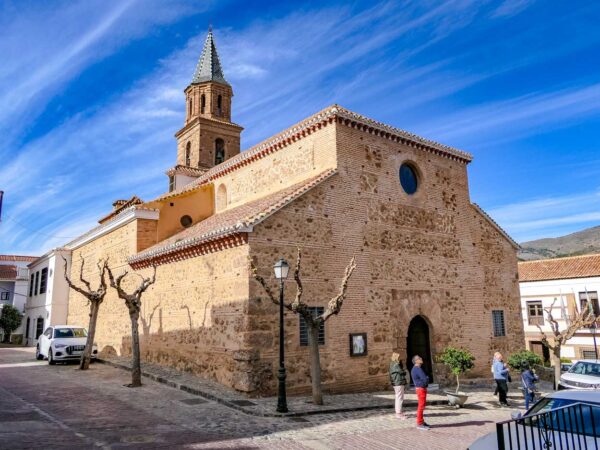
In this square there is also the church of San Andrés, from the 16th century with a Mudejar tower and an interior from the 18th century, and the building of the old municipal warehouse.
En Fondon you can follow a route to see ancient stately and bourgeois houses, such as the Godoy's House which is located in front of the aforementioned church, which was built in the mid-18th century, and whose front with the lineage shield stands out.
You can also see the Palace House of the Godoyas, from the 17th century, now a interpretation Center which opens on Saturdays and Sundays from 12 to 14 p.m.
Book your hotel, 15% discount, free cancellation
When planning your trip, we advise you to, well in advance, Book your hotel now on booking.com where you can find discounts from 15% and you will have a possible cancellation for free
Other notable stately homes in Fondon are that of Pepe Martinez built in 1845, an example of bourgeois housing, that of the Girl Font, from the XNUMXth century, and the Water Street House: Oliver's, also from that century.

At the exit towards Laujar de Andarax you can see the small Hermitage of the Virgin of Angustias, from the end of the 17th century in Moorish style, dedicated to the blessed souls.
The cult of blessed souls dates back to the first Christian settlers, once the expulsion of the Moors took place.
There is a reference that places a chapel dedicated to souls in the placeta of the Cross of the Souls, where is the Girl Font, and in the middle of the 17th century it was moved to the current location at the exit of the town.
This tradition is maintained Christmas dayWhen Fondon Animas Gang They go singing from door to door throughout the town.
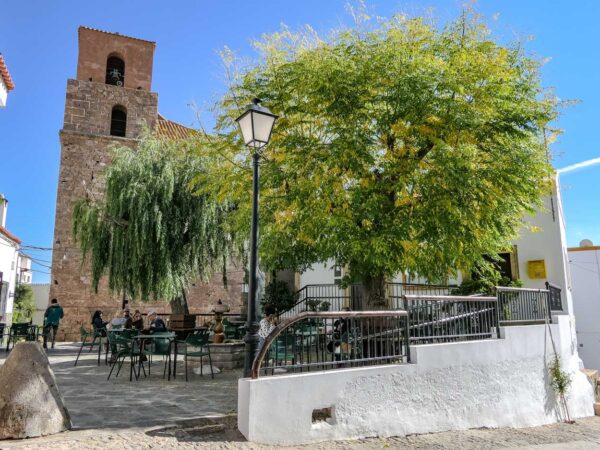
What to see and do in Almócita
Finally, it is also worth stopping at Almocita, a very small town located in the lower part of the mountains, where you can take a walk to see its beautiful corners with houses with white facades covered in flowers.
Furthermore, in recent years some of these facades have been decorated with graffiti of diverse themes, which gives the alleys of Almócita even greater color.
The center of the town is presided over by the Plaza Mayor where the 17th century church is located, with a façade that maintains the style of that period.

Map: route through the Alpujarra of Almería
On this map you have a route through the most beautiful towns in the Alpujarra of Almería.
Reserve your RENTAL CAR now for your trip
Looking ahead to your trip, book your rental car now on this website that offers you the best price guaranteed and allows you a possible free cancellation in most cases. Here you have more information with tips for renting a car


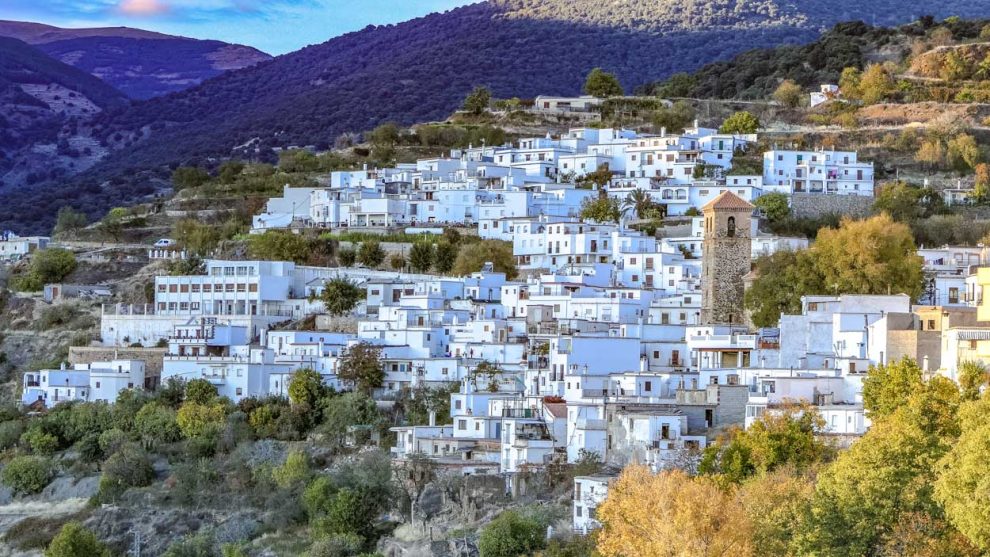

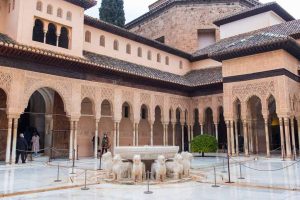
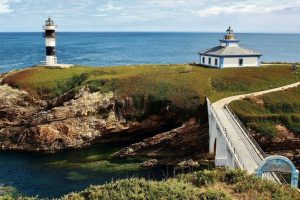











Comment